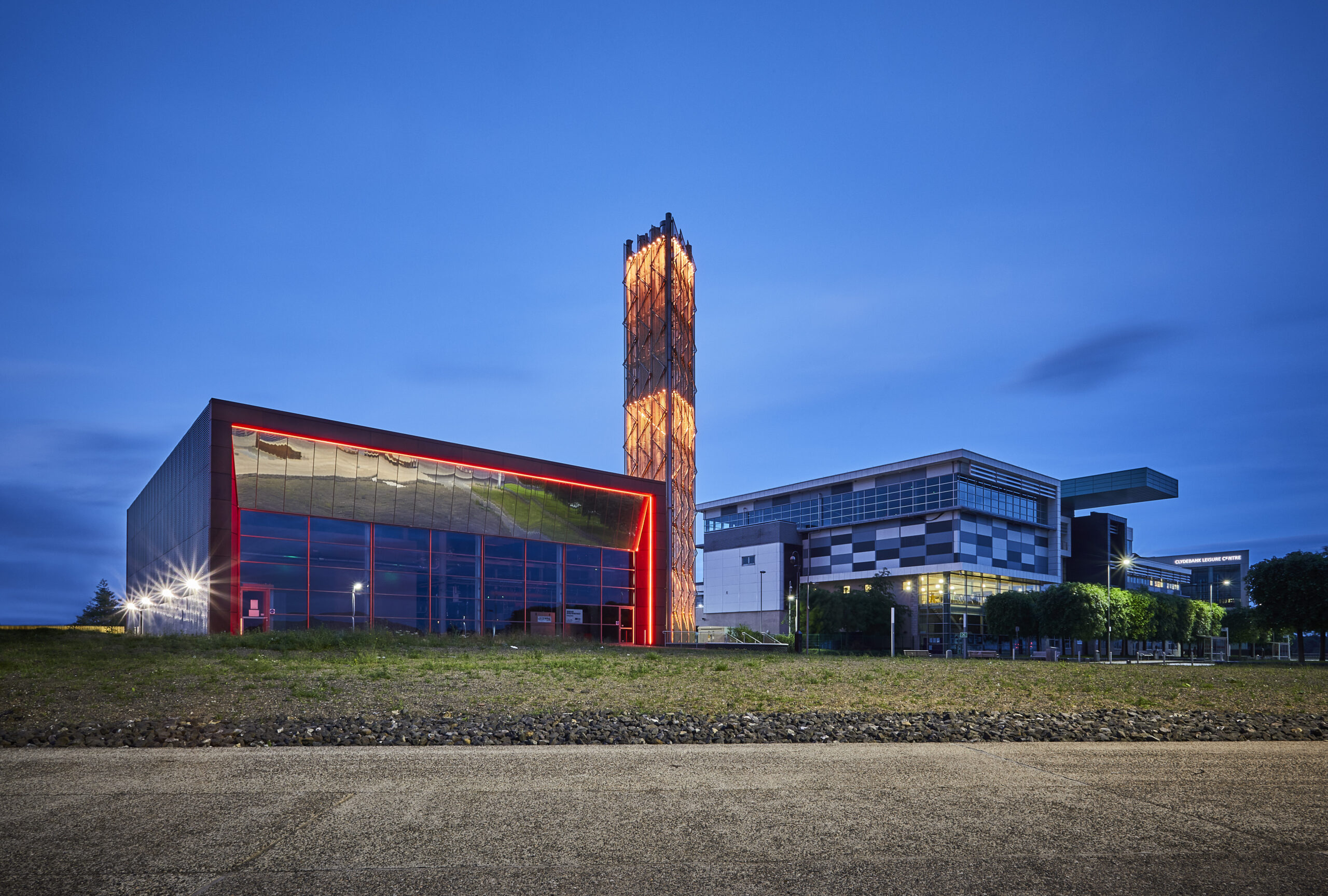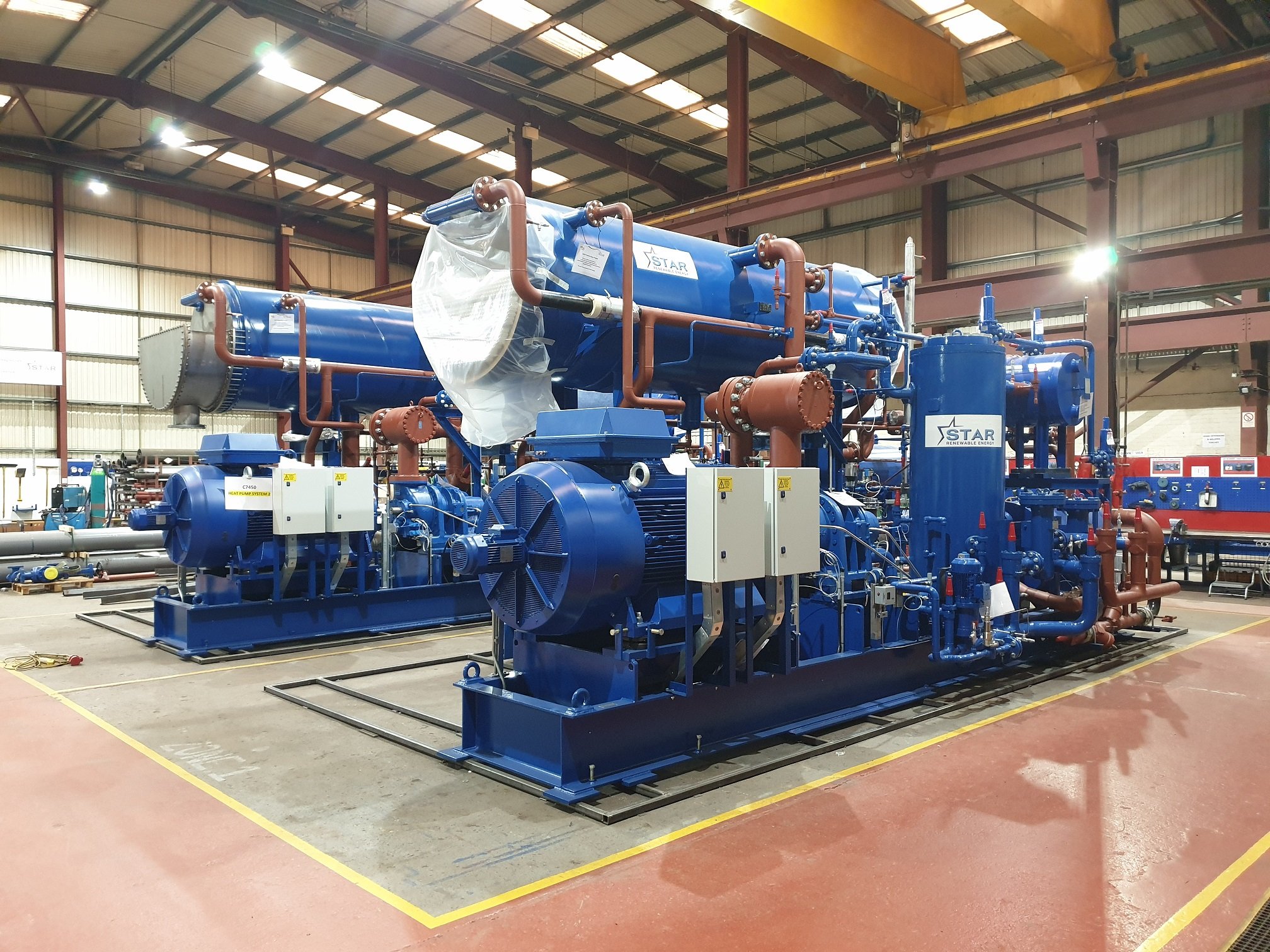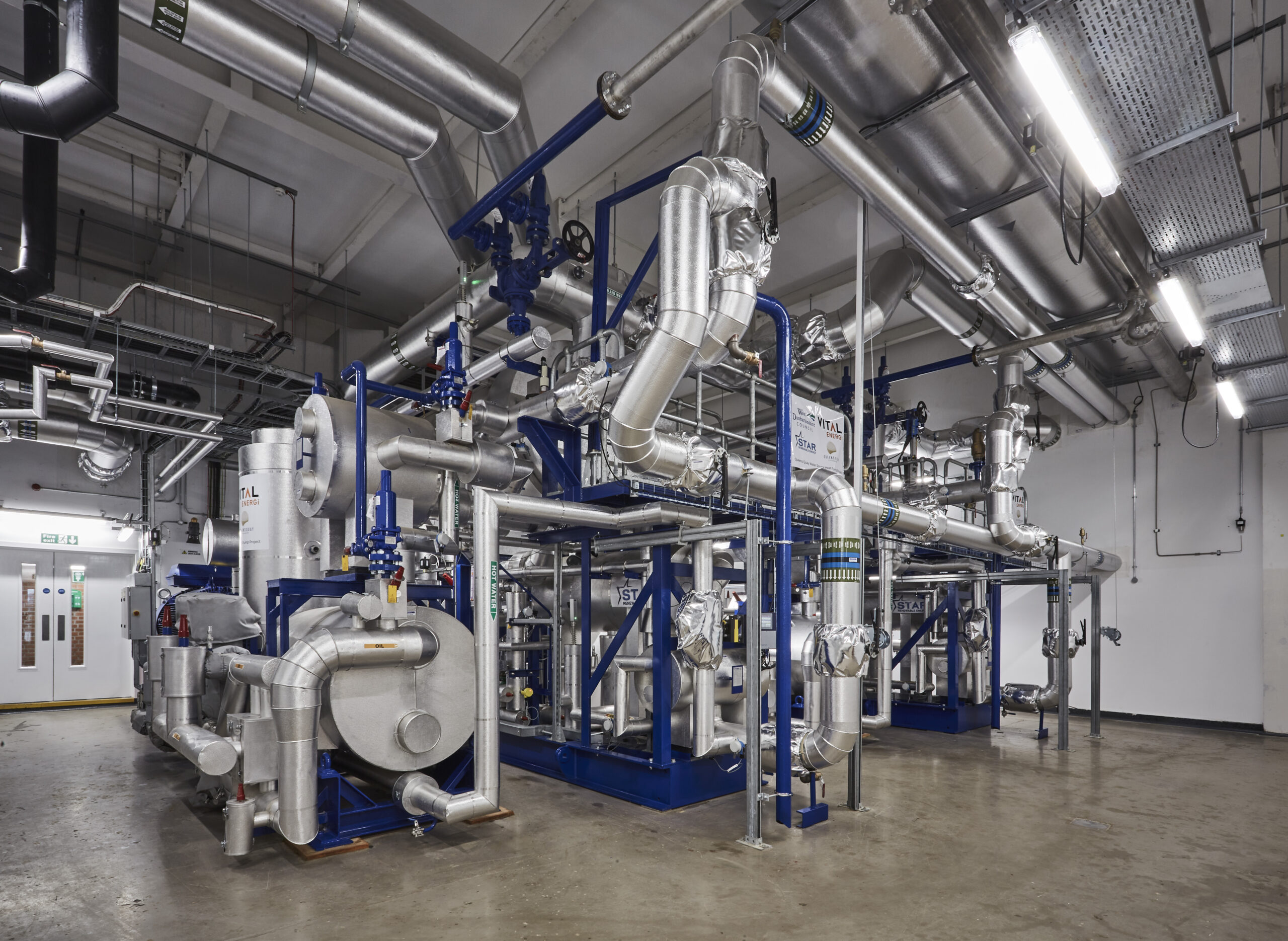Star Renewable Energy provide Queens Quay with the largest water source heat pump for district heating in Scotland.
Supported by the Scottish Government Low Carbon Infrastructure Investment Programme Star Renewable Energy has recently joined forces with West Dunbartonshire Council and Vital Energi to deliver Scotland’s first industrial scale water source heat pump for a district heating network. Star has engineered the twin 5.2MW water source heat pump as part of the £250m Queens Quay regeneration project in Clydebank, and will be installed in September once the development is complete.

Neatpumps for District Heating
The industrial heat pump takes water and heat from the River Clyde and generates energy to heat water up to 80°C, which is then pumped through 2.5km of district heating pipe connected to residential and commercial buildings. The system will deliver both hot water and heat to the development which includes existing buildings such as the Town Hall and West Scotland College, in addition to the residents of 1000 plus new homes.
With recent plans for regeneration in the Clydebank area, and planned development for new houses and businesses, it was decided by the West Dunbartonshire Council that this would be the perfect time to install a district heating system. A water source heat pump was the ideal solution for this project as Queens Quay is located on the banks of the Clyde. As heat pumps only consume electricity, which is trending to zero carbon, it allows the heat pump to deliver low carbon heating from a renewable source (water). For this project, the Neatpump will run on an open loop design, meaning water abstracted from the river basin will be in direct contact with the evaporator heat exchanger and associated pipe work and valves. The Council also has a plan to reduce CO2 emissions by 15% over the next seven years, and this low carbon renewable heat will significantly contribute to hitting the target.
The Neatpump was engineered in Glasgow and the team responsible for its groundbreaking design and development received the prestigious Rittinger Award by the International Energy Agency. The pioneering technology has made it possible to deliver heat at high temperatures using ammonia, a non ozone depleting refrigerant with zero global warming potential to run the system. The industrial water heat pump design also allows for an energy efficiency increase of 25%, in comparison to conventional commercial heat pumps.

Environmental Benefits and Social Benefits
Utilising water as a renewable energy source has a long list of benefits compared to burning fossil fuels, which is no longer a sustainable source of heat. SRE’s water source heat pump is three times more efficient at generating heat than a gas boiler and offers a lower price point than fossil fuels with an ability to consume off-peak electricity and store the heat generated. Queens Quay water source heat pump also produces a 60% lower carbon footprint than burning gas.
Low cost and low carbon, the advantages of a water source district heating system are plain to see. For business owners and residents at Queens Quay, the district heating system will offer reduced energy bills and no air pollutant emissions such as NOx and SOx, resulting in better air quality and a healthier lifestyle. Owners and tenants will also have the added benefit of no boiler servicing or repairs; with at least 200 homes on the development designed for social rent, this could vastly improve quality of life for tenants.
A First for Scotland
The parties involved in this project are expecting that other local authorities, wishing to reduce carbon emissions will be inspired by this proven, low carbon technology. This Neatpump installation is the first of its kind in Scotland but there is extraordinary potential for water source heat pumps to deployed in various locations across the UK. In England alone, more than 6 GW of renewable heat can be extracted from rivers and canals. Along Wales and Scotland’s long coastline, heatpumps have the potential to extract further heat from the surrounding sea as well as rivers, lakes and aquifers.
From 2025 there will be a national ban on gas heating for new homes, which means building developers and local authorities need to start exploring low carbon options. West Dunbartonshire Council are thinking ahead and leading the way in renewable energy and low carbon heat. As the grid decarbonises, engineering companies such as Star Renewable Energy are offering effective, reliable and sustainable solutions for the future.
West Dunbartonshire Councillor Iain McLaren, convener of infrastructure, regeneration and economic development, said: “Providing low carbon heat to the Queens Quay housing development, as well as the college and local businesses really does put Clydebank at the forefront of renewable energy technology, and it is fantastic to see the interest that is being generated by this exciting project. The scheme looks set to deliver huge environmental benefits, as well as financial ones, far into the future. I am really looking forward to the completion of the system, and to see whether we can expand or replicate the idea elsewhere.”
Queens Quay will harvest solar energy from the entire River Clyde catchment area; a huge 4000 square kilometres. If district heating networks powered by these kind of renewable sources were installed across the UK, capital costs of heat networks could be reduced by 40% as reported by the Energy Technologies Institute (ETI). Moreover, decarbonisation of the global energy system can grow the global economy and create up to 28 million jobs in the sector by 2050.


